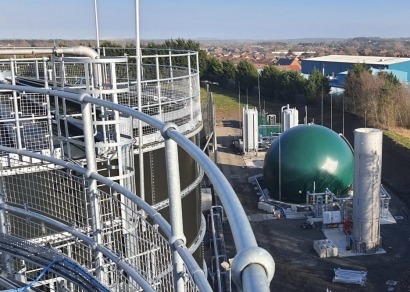
Synergie, part of the PD&MS Group, managed the full project over the four-year period from feasibility, through construction to commissioning, working in partnership with Sterling. This included supporting the business case for the plant and identifying the correct technology and feedstock that would allow the waste solvents to be converted to low carbon energy through an AD process.
This is the first time in the UK that waste solvent feedstocks have been used in an AD plant to produce low carbon gas. The plant takes waste and converts it into a value income, providing low carbon energy, with the added benefit of providing greater energy resilience.
As part of the proof of concept, Synergie managed the build of a pilot plant which proved the yield from the feedstock, underpinning both the technology selection and the business case, which allowed the construction of the new plant to take place.
The plant, which supports the site’s existing waste treatment facility, will offset greenhouse gas emissions by nearly 6,500 tons of carbon dioxide equivalent per year. It will also produce enough energy to power an equivalent of 6,000 homes. It will not only treat Sterling’s own manufacturing waste, but is open to other companies from across the UK to enable them to benefit from more sustainable waste treatment services.
Brian Peutherer, Vice President of Environment, Health and Safety at Sterling, said, “We are delighted to be leading the way with this smart, sustainable solution to waste management and low carbon energy production, which is already reducing our carbon emissions and providing a valuable solution to local organizations’ waste needs. The plant is the first of its kind in the UK as it uses liquid organic waste as a feedstock.
"The support and services provided by Synergie were invaluable in enabling us to design and provide proof of concept for the feedstock and new plant, as well as aiding with its build and commissioning. Their experience and expertise in AD made them the natural partner to work with us on this project.”
This plant provides a significant step forward for Sterling in its goal to reduce the site’s carbon emissions by 50% by 2025, to support its ultimate goal of carbon neutrality.

